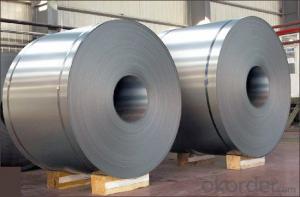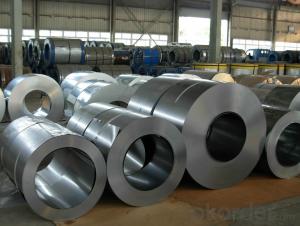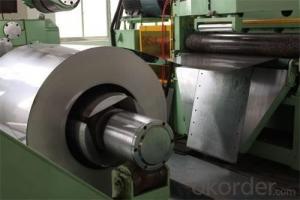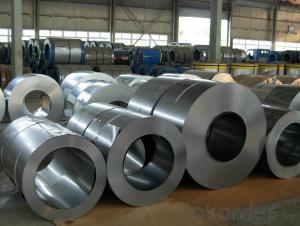Cold Rolled Steel Coil with Prime Quality various sizes and Lowest price
- Loading Port:
- Shanghai
- Payment Terms:
- TT OR LC
- Min Order Qty:
- 100 m.t.
- Supply Capability:
- 10000 m.t./month
OKorder Service Pledge
OKorder Financial Service
You Might Also Like
1.Structure of Cold Rolled Steel Description:
The raw material of cold rolled steel coil/sheet is high quality hot rolled product, and after pickling continuous rolling. degreasing,
3.Cold Rolled Steel Images
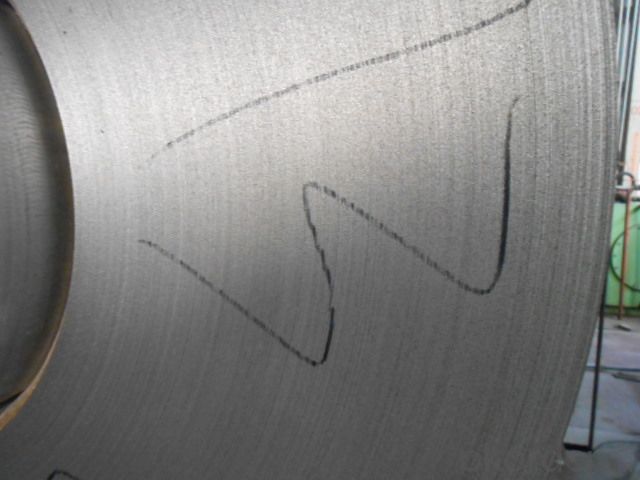
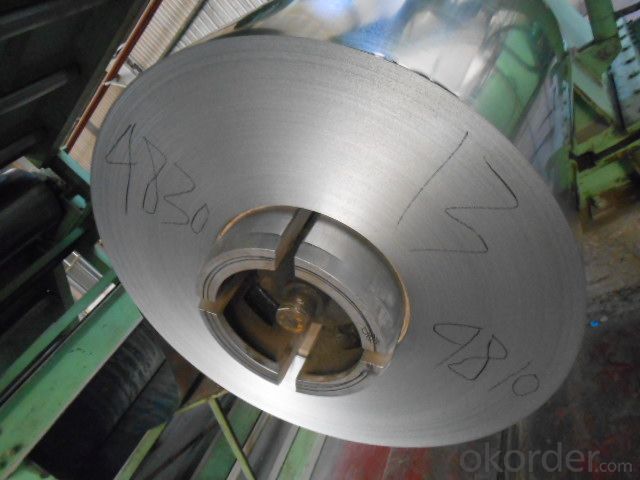
We have established the international advanced quality management system,every link from raw material to final product we have strict quality test;
4.Cold Rolled Steel Specification
Width: 1250,600-1250mm
Coil weight:3-12 MT
Standard:AISI,ASTM,DIN,GB,JIS,JIS G3302 ASTM 653M EN10142
Thickness: 0.16mm~1.5mm,0.16-1.5mm
5.FAQ of Cold Rolled Steel
We have organized several common questions for our clients,may help you sincerely:
A world class manufacturer & supplier of castings forging in carbon steel and alloy steel,is one of the large-scale professional investment casting production bases in China
2.How to guarantee the quality of the products?
We have established the international advanced quality management system,
2.Main Features of the Cold Rolled Steel:
• High strength
• Good formability
- Q:What are the pros and cons of non-stick and stainless steel pots and pans ?Thanks
- Non Stick is good for frying, sauteeing, etc., but I find they don't tend to last as long as regular stainless steel pans because they can get scratched relatively easy if you use metal stirring utensils. Stainless steel is good for soups, stews, or if you plan to use a metal stirring utensil (whisk, fork, etc.). I use both non-stick and stainless steel pots and pans. I think the most useful pots/pans I have are my medium-sized, non-stick frying pan and my small, stainless steel dutch oven.
- Q:What are the common tests performed on steel coils for quality assurance?
- Steel coils undergo various tests to ensure their quality and compliance with industry standards and customer needs. Dimensional inspection is a prevalent test that measures the length, width, and thickness of the coils to verify their specified dimensions. Any deviations in dimensions can indicate potential quality issues. A thorough visual inspection is also conducted to identify defects and surface imperfections like scratches, dents, or rust. This examination is crucial to identify any visual flaws that may affect the coils' performance or appearance. Furthermore, mechanical tests are carried out to assess the strength and durability of the steel coils. Tensile tests measure the maximum force the steel can withstand before breaking, determining its tensile strength, yield strength, and elongation properties. Another commonly performed mechanical test is the hardness test, which determines the steel's resistance to indentation, indicating its strength and toughness. These tests are typically conducted using methods like Rockwell, Brinell, or Vickers. Corrosion resistance is also evaluated as a vital aspect of steel coil quality. Tests such as salt spray or humidity tests simulate harsh environmental conditions to assess the steel's ability to resist corrosion. Lastly, chemical composition analysis is performed to ensure that the steel coils contain the necessary elements in the correct proportions. This analysis verifies that the steel meets the required chemical properties, which significantly impact its performance and suitability for specific applications. In summary, these common quality assurance tests guarantee that steel coils meet industry standards, customer requirements, and are suitable for their intended use.
- Q:I bought a damascus steel knife. It will be used for display. Nothing like hunting/skinning. If It is just sitting around, will it rust? (assuming that it isn't getting wet) Thanks for the help.
- From that point of view the strength or edge-holding ability means very little. Specifically, the bushcraft knife is pattern welded steel. True damascus or Wootz steel is something you'll only find in museums and private collections. they stopped making it several hundred years ago. Despite what many people have claimed, Wootz damascus was inferior to modern tool steels in every respect. It was a brittle, dirty material.
- Q:Well the other day i told my friend that when you put a compass near steel it will screw up and he said only magnets do that then i showed him and it worked then he said: that'ss because steel has its own magnet in it coz it builds up static electricity is that correct what he said? thanks
- If you sprinkle iron filings near a bar magnet (on paper, etc.) the filings will try to line up with the magnetic field (because iron atoms behave like tiny magnets). Bringing the compass near steel (mainly iron with a little carbon) will cause the iron to try to align with the magnet of the compass needle, however, because the needle is free to swing it also aligns with the magnetic field set up between the needle and steel. Any static electricity would have nil effect on the magnetic field.
- Q:I want to experiment with making steel and want to especially make it stronger. And also I want to know if its possible to turn a meteorite into steel?
- If you're looking to make steel stronger, I can suggest 2 things: 1. If you're actually smithing the steel yourself, and forging it from hot liquid metal, then if you can get ahold of some Carbon (i have no idea where you can get some), you can add it to the molten steel to make it stronger. Sword Smiths did it all the time back in the Dark Ages. (you'll have to look up the exact Science and Process of how to do it) 2. There's a treatment for steel called Tempering. If you Temper the steel, it makes it stronger. You do this by 1st Forging what you're making. In this case, I'll use a sword. Take the Sword and re-heat it (i dont know the exact temperature) until it glows-hot. You can use a blast furnace, a campfire, or any other extreme-source of heat. Some companies use molten Salt - yes, the Condement, and dip the sword in it until it's glowing-hot. Now you have to super-cool it. This is simple, all you need is Ice water. Submerge the Sword in it, until it's cool to the touch. Now toss the Sword back into your source of extreme Heat. Get it glowing hot, and then take the sowrd out. Set it aside, and let it cool naturally. Once it's cooled, it's TEMPERED, and alot stronger. NOTE: If you stop at the ICE-WATER stage, you'll only succeed in making your Sword BRITTLE. You MUST Continue the Process once Started. - Hope this helps.
- Q:Please people suggest me how can I select external finishing for Steel Building as there is a wide range of choice available.
- Nowadays, okorder /
- Q:How are steel coils used in the production of HVAC ductwork?
- Steel coils are used in the production of HVAC ductwork as they are rolled into thin sheets and then formed into the desired shape to create the ducts. The coils provide strength and durability to the ductwork, ensuring it can withstand the high temperatures and pressure of air conditioning and heating systems.
- Q:How are steel coils used in the production of metal roofing panels?
- The production of metal roofing panels relies heavily on steel coils, which are rolled sheets of steel. These coils play a crucial role in shaping and forming the panels. To begin, a machine called a roll former is used to unwind and feed the steel coils. This machine gradually shapes and bends the steel into the desired profile of the metal roofing panel using a series of rollers and dies. The coils pass through these rollers, which apply pressure and force to mold the steel into the required shape and size. After the metal has been formed into panels, it may undergo additional processes to enhance its durability and appearance. These processes can include galvanizing or coating the panels with protective layers to prevent corrosion and improve weather resistance. These additional steps ensure that the metal roofing panels can withstand harsh environmental conditions and provide long-lasting performance. Steel coils are chosen over other materials for the production of metal roofing panels because of their strength and durability. Steel has an exceptional strength-to-weight ratio, making it a suitable material for roofing applications. Additionally, steel is highly resistant to various weather conditions such as high winds, heavy rains, and extreme temperatures. This makes it an ideal choice for roofing panels that need to withstand the elements and provide reliable protection for buildings. In conclusion, steel coils are an essential component in the manufacturing process of metal roofing panels. They are used to shape and form the panels, which then undergo further processing to enhance their durability. The use of steel in these panels ensures that they can withstand harsh weather conditions and provide long-lasting performance for residential, commercial, and industrial buildings.
- Q:What are the common methods of transporting steel coils?
- The common methods of transporting steel coils include flatbed trucks, rail cars, and ocean vessels.
- Q:Whats the difference in composition? When LTCS is used generally?Whats the temperature range, that these materials can be used? Is there any relation between Killed carbon steel, LTCS, stainless steel, carbon steel(normal)? How to categorise/classify these?Thankyou very much in advance..
- When exposed to elevated temperatures, quenched and tempered steels are more susceptible than normalized steels to permanent reduction in strength. This is especially true when exposure temperature begins to approach tempering temperature used when the parts were produced. In addition to losing strength, tempered steels also may experience reduced impact toughness after being exposed to long-term elevated temperatures. General belief is that this is the reason for LCC's reduced maximum allowable temperature limit of 345°C / 650°F in B16.34.
1. Manufacturer Overview |
|
|---|---|
| Location | |
| Year Established | |
| Annual Output Value | |
| Main Markets | |
| Company Certifications | |
2. Manufacturer Certificates |
|
|---|---|
| a) Certification Name | |
| Range | |
| Reference | |
| Validity Period | |
3. Manufacturer Capability |
|
|---|---|
| a)Trade Capacity | |
| Nearest Port | |
| Export Percentage | |
| No.of Employees in Trade Department | |
| Language Spoken: | |
| b)Factory Information | |
| Factory Size: | |
| No. of Production Lines | |
| Contract Manufacturing | |
| Product Price Range | |
Send your message to us
Cold Rolled Steel Coil with Prime Quality various sizes and Lowest price
- Loading Port:
- Shanghai
- Payment Terms:
- TT OR LC
- Min Order Qty:
- 100 m.t.
- Supply Capability:
- 10000 m.t./month
OKorder Service Pledge
OKorder Financial Service
Similar products
New products
Hot products
Related keywords
